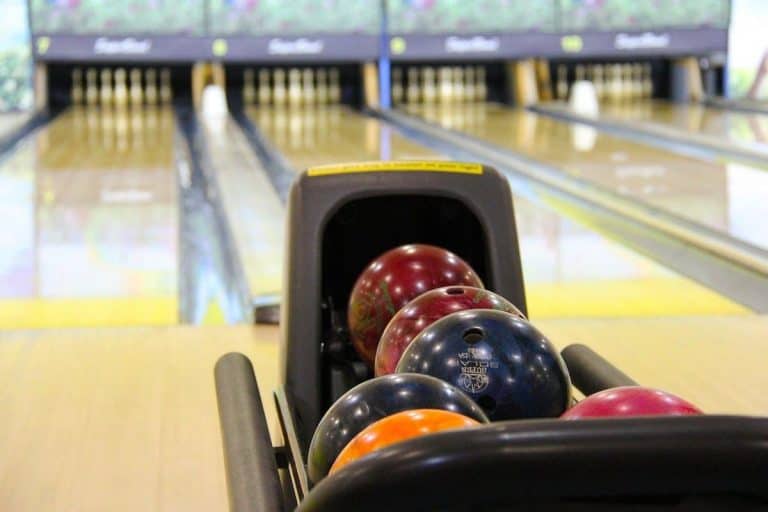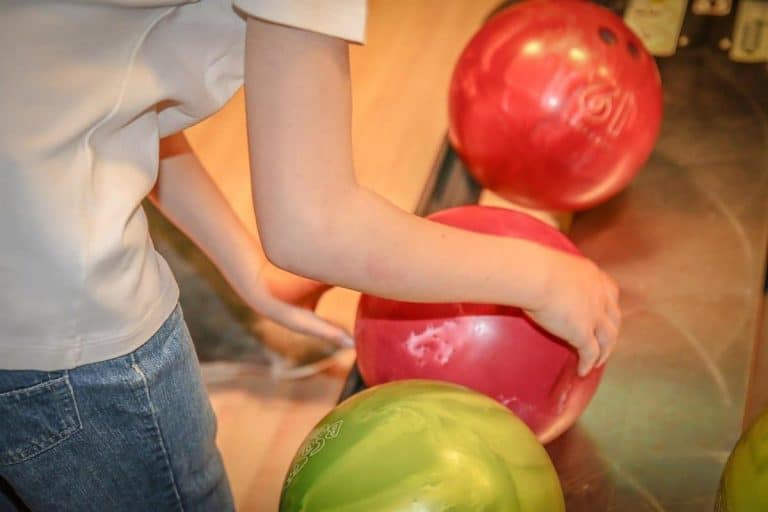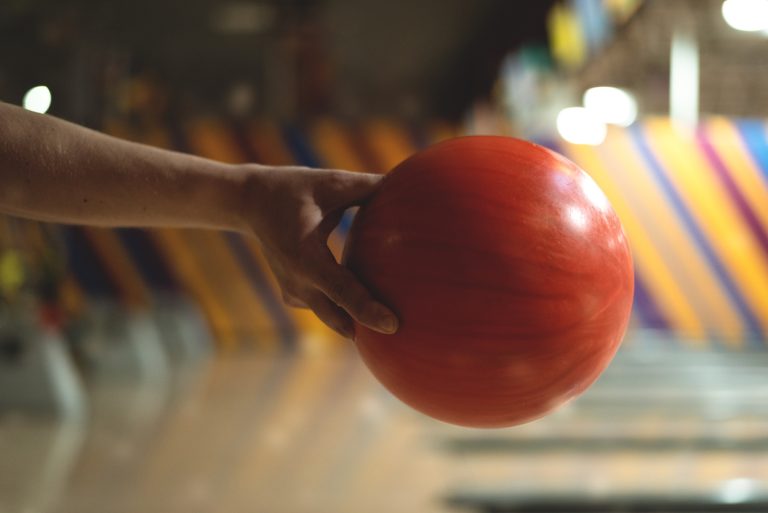Do Plastic Bowling Balls Hook?
While it may seem obvious (especially to pro bowlers), the most important piece of equipment for any bowler is their bowling ball. Your bowling ball will interact with all the other elements of the sport – the bowler (you), the oil pattern, the lane, and the pins. Plastic bowling balls are one of many options for bowling balls today, but you may want to know if they hook if your bowling style requires this.
Plastic bowling balls hook, but not nearly as much as a urethane ball. There’s less weight, which means less friction is created between the surface of the ball and the alley. The result is less control, less hooking, and a smaller chance that you’ll be able to manipulate its trajectory.
Keep reading to learn more about your plastic bowling ball’s abilities and limitations and whether you can achieve the hook you want to achieve a higher bowling score.
What Is a Hook in Bowling?
If you are trying to improve your bowling score, you should put time and effort into learning how to hook your ball. Hooking the ball into the pins and the pocket at the right angle increases your first ball pin count compared with a straighter throw. This is why you see every pro bowler on TV using the hook on their first ball.
To develop a consistent bowling hook, you will want to move away from the house ball (or your own ball with a plastic coverstock). While this makes a great spare ball, it is not the best option for the perfect hook shot. Visit the pro shop to find a ball that will better suit your hook goals (just remember – this will be a ball that is not plastic). You can also ask someone at the pro shop for advice to find the best ball for your bowling needs.
House balls will usually come with a plastic coverstock for durability to keep costs for the bowling alley owner down. But for bowlers, this means they will likely travel down the lane in a straighter line. To improve your score, you need to change not only your grip and technique, but also the ball you use.
You can also seek professional training to help you perfect your bowling hook. Since the process can be tricky, working with someone and learning the proper positions will help you get it right faster than doing this on your own.
How to Hook Your Bowling Ball
If you are ready to hook your bowling ball, you may need to learn a new throwing technique. There are a few steps to do this:
- Position yourself in the same start position or stance as you would for typical delivery.
- Line up your shoulder and ball with your target (this will change when you learn the amount you will hook the ball).
- When releasing the ball, rotate your fingers around the side of your bowling ball.
This process will likely require some repetition and practice to get it right. But once you learn to hook your ball consistently with controlled motion, you will gain confidence and see better scores.
How Polyester or Plastic Coverstock Impacts Your Hook
Most of the entry-level bowling balls available today will come with a plastic coverstock. The primary characteristic of these coverstocks is that they do not have much hook potential (Wiki source).
The main reason for this is because plastic coverstocks are less porous and harder than other materials used. This means less wear and tear on the bowling lane and longer lasting balls for the facility owner.
But for the bowler, plastic balls have less friction with the bowling lane. There are three primary uses for plastic coverstocks today.
Ideal for Recreational or Casual Bowlers
As mentioned above, most of the entry-level bowling balls used today (and house balls offered by bowling centers) have plastic coverstocks. They are ideal for casual bowlers because they are more affordable and provide a high level of durability. You can also find these coverstocks in an array of designs and colors. Even better, they are easier for you to control.
Used for Spare Balls for Competitive Bowlers
A plastic coverstock is used for the spare balls (the second shot) used by competitive bowlers. Because most spares do not need a powerful hook, the top bowlers often want to throw a straight ball when they are converting a spare to take the oil pattern out of the equation. The plastic balls are the perfect solution because they do not hook as much as the balls used for strikes.
For Dry Lane Conditions
If you are dealing with dry lane conditions, you may find the low friction offered by a plastic ball gives you the best chance of a strike.
As you can see from the information here, a bowling ball with a plastic coverstock will find a home in all bowlers’ bowling bags, from advanced to beginners.
Is There Any Way to Hook a Plastic Bowling Ball?
Unfortunately, your ability to hook a plastic bowling ball is limited. Even if you have perfected the release with other materials, it will not be very effective with plastic. While it may hook slightly, it will not be the significant hook you are used to with your other balls.
Bowling Ball Material to Use for Learning to Hook Your Shot
If you are in the process of learning to hook your bowling ball, using a ball with a urethane coverstock is ideal (source). This material was first introduced in the 1980s and represented a huge innovation in the bowling industry.
A urethane coverstock creates much more friction with the surface of the lane than the plastic cover. It also allows you to generate more of an entry angle into the pocket, which results in a higher level of strike power.
This type of coverstock can be found on an array of entry-level performance balls. While it has been replaced with reactive resin for higher levels and competitors, urethane coverstocks are still popular, and some PBA titles have been won using this style of ball.
Today, most bowling ball manufacturers have several ball options with the urethane coverstock. Many top-level players, especially those with higher rev rates (a measurement of ball rotation speed), keep this type of ball in their arsenal for situations when the reactive resin balls are just too much.
How to Choose the Right Coverstock for Your Bowling Ball
A simple way to think about a coverstock finish is to keep in mind that the rougher the finish is, the more friction that is produced. This means the ball will hook earlier than the smoother finish options. Therefore, sanded surfaces may be used when a bowler wants their ball to begin hooking near the end of the oil pattern. A sanded ball’s additional surface texture allows it to “grip” the lane better, even though there is a lane conditioner between the lane and ball (source).
A polished surface is helpful in a situation where you want to get your ball further down the lane before it begins to hook. Consider the goal when taking the shot to ensure you use the right type of ball with the right coverstock.
Improve bowling score with ball selection
Once you understand the various material types available for bowling balls and how to use each of them to your advantage, you can improve your game scoring and average.
Plastic bowling balls are not the best option when the bowler needs to throw a hookl. There are other materials to use. But they do have specific advantages and uses.
You can find the right type of ball for your needs based on your bowling style and what you want to improve. In some cases, having multiple bowling balls made of different materials is best, as this will ensure you can make any shot, regardless of the conditions.
Conclusion
Plastic bowling balls aren’t found in too many competitive settings, but that doesn’t mean you can’t use them to have a good round or two. They’re great for training purposes, but don’t expect to hook or score too many strikes.
Now that you have an understanding of the friction and physics behind throwing a good hook ball, you can better choose the right bowling ball that matches your own bowling style as well for each specific situation during a game.






